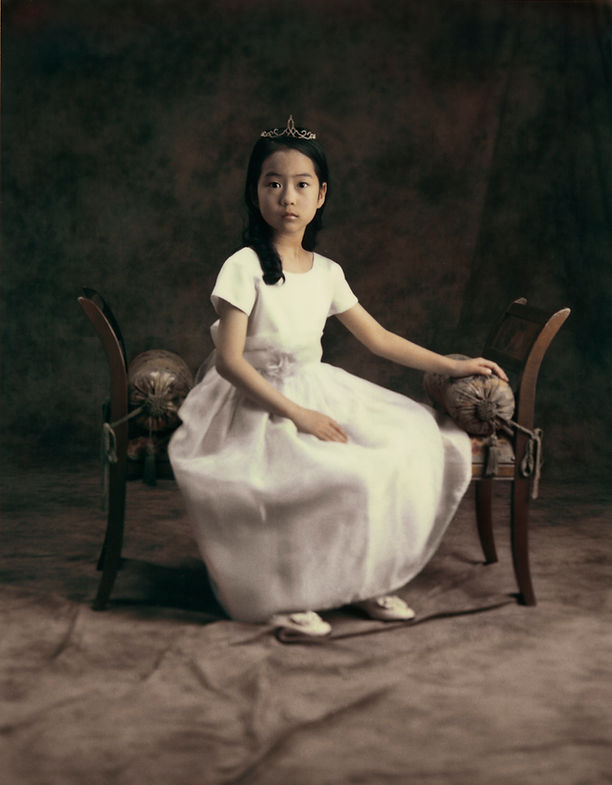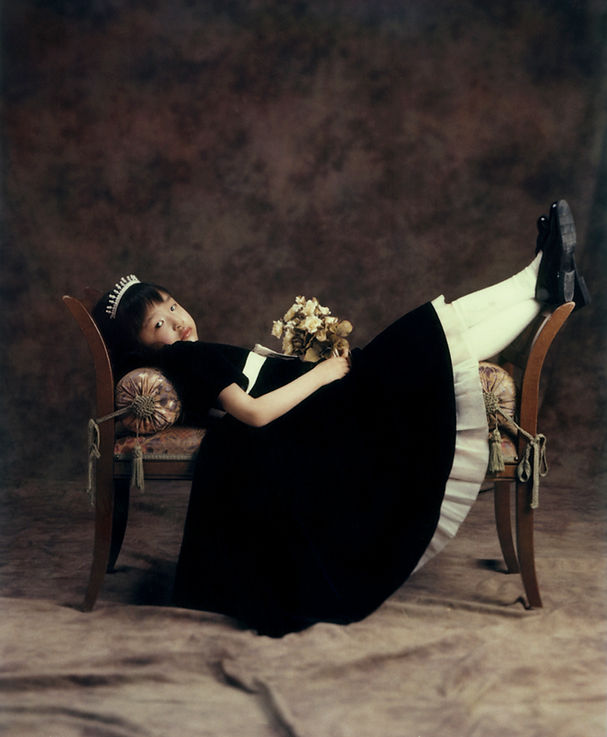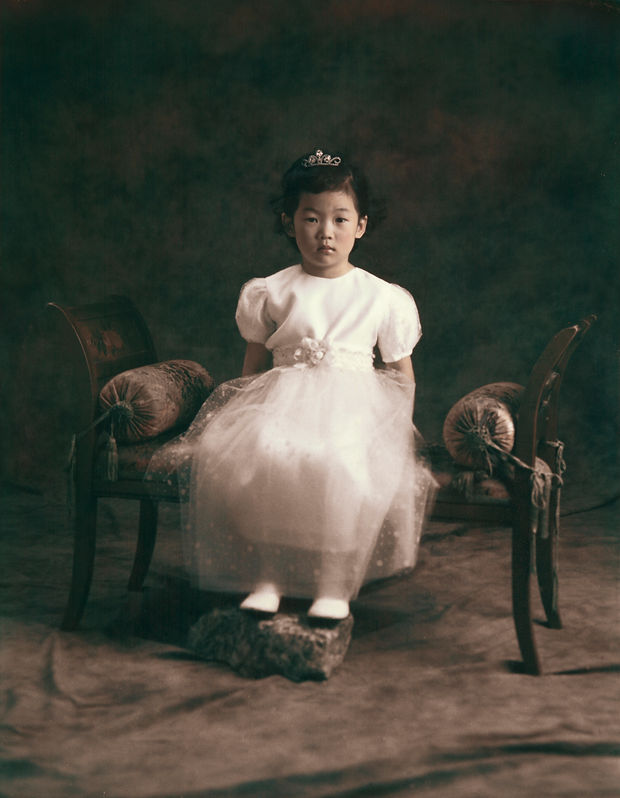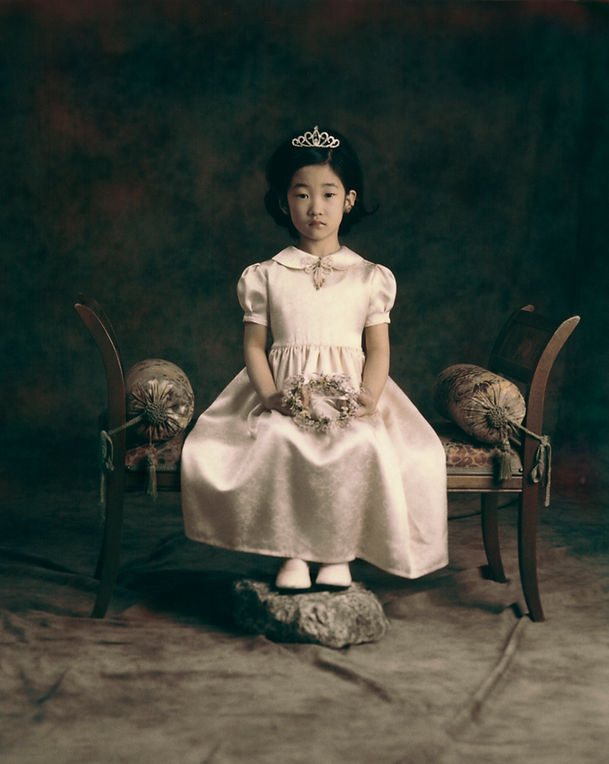축복의 통로가 된 연인
축복의 통로가 된 연인
축복의 통로가 된 연인
축복의 통로가 된 연인
축복의 통로가 된 연인
Une femme
축복의 통로가 된 연인

The woman with Gold flower hairpin, Digital color print, 2004

The woman with pomegranates#1, Digital color print, 2004

The woman with pomegranates#2, Digital color print, 2004

The woman with pomegranates#1, Digital color print, 2004
A Woman, the Passage of a Blessing
As God commended in the beginning of the world men be fruitful, multiply, and replenish the earth, the very true nature of human life is in loving someone, giving birth to and bringing up offspring. For women who are destined to pay their lives in return for their love, loving someone is not always an experience as comfortable as that of men. A series of work entitled “une Femme” is perhaps a portrait of the women who are under such a damning predetermined fate. We women, however, are well aware that God never created us to end our destiny with such a curse.
The matter of gender for women is, differently from men, one of the most significant topics, and also for me, there may be no exaggeration if I say that my gender none other than my own identity. In this sense, “une Femme” is a serial work that brings together all questions about my self and answers I have made so far.
Giving birth, the true nature of myself and all other women as well, is recognized as rights and duties imposed on them along with blessings and curses at the same time. It can be only discussed in reference to ‘our women’s love’. With this love, I consider, we have to document another human history different from the one men has recorded so far.
There is a noticeable disparity between women and men in the way of seeing themselves. It’s not sure this derives from whether their social milieu or physiological, psychological problems. Man is thus a different being from woman, and I come to better grasp my own self, based on the difference from others. I wish to regard my work “une Femme” as a monologue on the identity of myself as well as other women. This is a monologue uttered by ‘us all women’. I earnestly hope that men would not mistakenly assume those words ‘us all women’ because this work is nothing but an attempt to understand myself as a woman and I thoroughly reject all dichotomies between woman and man.
인간은 어떠한 이유로 이 세상에 존재하게 되었을까
수 천년 동안 내려온 인류의 역사 역시 그 주제는 사랑에 관한 것이라 말해도 과언이 아닐 것이다. 나머지 것들은 좀 더 사랑이야기를 매력적으로 만들기 위한 장신구에 불과하다. 그런데 왜 우리는 예나 지금이나 ‘사랑’에 대해서는 소심증에 걸린 사람처럼 구차한 설명과 변명을 늘어놓게 되는 걸까? 사랑’은 완전한 단어이다. 그런데 우리는 항상 ‘절대적, 영원한, 유일하게....’ 기타 등등의 형용사나 부사가 따라붙지 않으면 만족을 하지 못한다. ‘사랑’이라는 단어 그 자체에 이미 우리가 원하는 모든 미사여구들이 다 포함되어 있는데 말이다. 도대체 우리의 사랑에 대한 이러한 불안증은 어디서부터 시작된 걸까?
에덴의 동산에서 부족한 것 없이 천상의 사랑을 누리던 인간이 지상에 내려와 고달픈 사랑을 시작하게 된 이유는 어디에 있을까? 정말 신이 먹지 말라는 금단의 열매를 단순히 먹었기 때문일까? 좀 더 타당한 이유가 필요하다. 인류의 사랑에 대한 심각한 불신은 금단열매를 따 먹어서가 아니라, 그것을 먹은 아담과 이브가 서로를 비난한 것에서부터 시작된 것은 아닐까. 특히 아담은 자신의 뼈 중에 뼈요 살 중에 살이라 말할 만큼 이브에 대한 사랑을 호언장담했다. 하지만 막상 어려움 앞에서 그는 그녀의 잘못을 감싸주기는커녕 오히려 자신의 실수까지 그녀에게 덮어씌웠다. 그런 아담의 모습을 바라보는 이브의 마음은 얼마나 참담했을까. 난 가끔 에덴에서 쫓겨난 아담과 이브가 어떤 모습으로 살았을까 하고 상상해본다. 그리고 이미 변덕스러운 사랑의 경험으로 크게 상처받은 그녀가 어떻게 다시 그를 받아들이고 인류의 어머니가 될 수 있었는지 생각해본다. 정말 이브는 에덴시절 아담과 나누었던 천상의 사랑에 대한 기억을 지울 수 없었던 걸까?
My little princess

My little princess # 1, Polaroid with digital print,2004

My little princess # 2, Polaroid with digital print,2004

My little princess #3, Polaroid with digital print,2004

My little princess # 4, Polaroid with digital print,2004

My little princess #4, Polaroid with digital print,2004